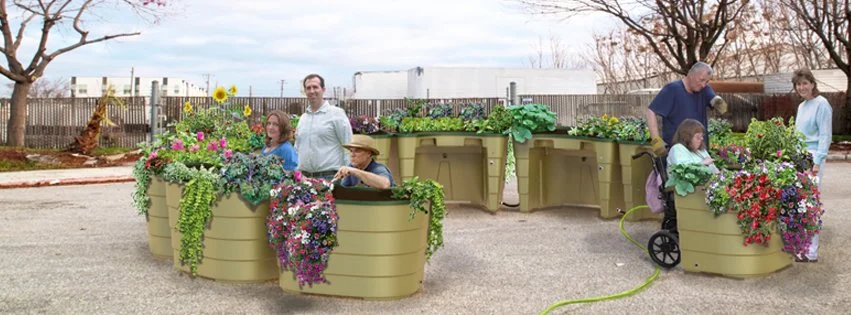5 Accessible Gardening Tips
How to Enhance Independent Living for the Elderly: 5 Accessible Gardening Tips
Render of a Green Circle Garden being used by Seniors.
What Is Accessible Gardening and Why Is It Important?
Accessible gardening is about creating outdoor spaces that everyone—regardless of age or mobility—can enjoy safely and comfortably. For older adults, gardening provides numerous physical and mental health benefits, from gentle exercise to stress relief and sensory stimulation.
However, traditional gardens can be difficult for seniors or wheelchair users to access. That’s why the Green Circle Garden was created — a fully accessible, raised garden bed that makes gardening easier, safer, and more enjoyable for everyone.
Whether in a senior living home, independent living community, or backyard, accessible gardening encourages independence, activity, and connection with nature.
1. Use Raised Garden Beds for Accessibility
One of the most effective ways to make gardening accessible for seniors is by using raised garden beds. These elevated structures reduce the need to bend or kneel, helping prevent strain on the back, knees, and joints.
The Green Circle Garden is designed with this in mind — its wheelchair-accessible circular shape allows gardeners to reach every area comfortably. This design supports independence and encourages seniors to garden longer, safely, and confidently.
2. Choose Adaptive Tools That Reduce Strain
What are the best tools for accessible gardening?
For elderly gardeners, lightweight and ergonomic tools make a big difference. Look for trowels, pruners, and watering cans with:
Long, cushioned handles
Easy-grip designs
Lightweight materials
Paired with the Green Circle Garden’s raised height, these adaptive tools help gardeners work while standing or sitting, making the experience safe, comfortable, and rewarding.
3. Select Low-Maintenance Plants
When planning an accessible garden, simplicity is key. Choose low-maintenance plants such as:
Herbs (basil, thyme, mint)
Leafy greens (lettuce, kale, spinach)
Native flowers and pollinator-friendly species
The Green Circle Garden includes built-in watering and drainage features, helping reduce maintenance tasks like frequent watering or soil management — perfect for independent gardeners.
4. Design for Safety and Accessibility
Accessible Raised Garden Beds made by Green Circle Garden
How can you make a garden safer for seniors?
Safety is essential in accessible garden design. Keep pathways wide, level, and free of obstacles. Add non-slip surfaces and ensure all areas are reachable from a wheelchair or mobility aid.
Because of its open circular design, the Green Circle Garden allows gardeners to move around freely and reach every plant without bending or stretching. This makes it an ideal choice for senior living communities, rehabilitation centers, and public parks promoting inclusive outdoor spaces.
5. Create a Sensory Gardening Experience
Installing a Green Circle Accessible Garden in a School
Accessible gardening isn’t only about physical accessibility—it’s also about engaging the senses. Sensory gardens help stimulate memory, calm the mind, and boost happiness.
Encourage seniors to plant:
Fragrant herbs like lavender or rosemary
Soft-touch plants like lamb’s ear
Brightly colored flowers like marigolds and zinnias
The Green Circle Garden’s ergonomic design allows gardeners to touch, smell, and see their plants up close, creating a rich sensory experience that promotes relaxation and emotional well-being.
Why Accessible Gardening Supports Independent Living
Awarded to Green Circle Garden for universal design.
Accessible gardening empowers seniors to stay active and connected with nature while maintaining their independence. It provides physical exercise, mental stimulation, and a sense of accomplishment—all essential components of healthy aging.
The Green Circle Garden embodies these values, offering a practical and inclusive solution for accessible gardening in homes, schools, senior living facilities, and community spaces.
By bringing accessibility and beauty together, it enables seniors to garden confidently, comfortably, and independently—one seed at a time.




